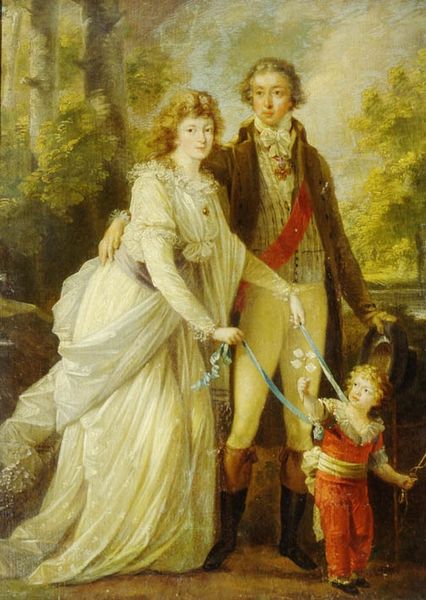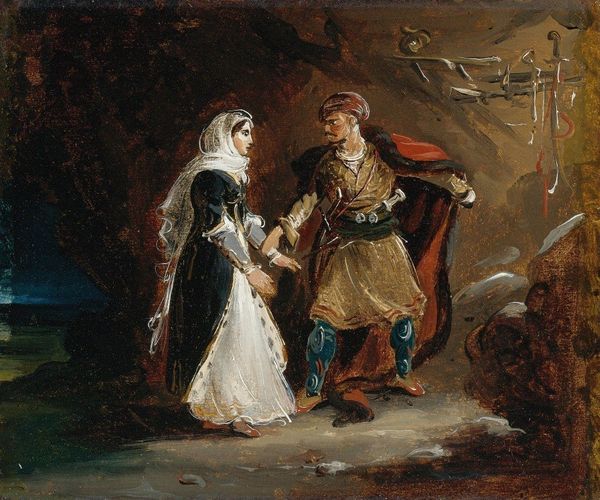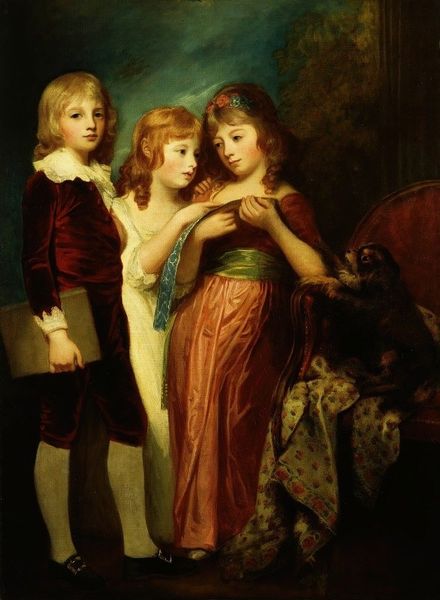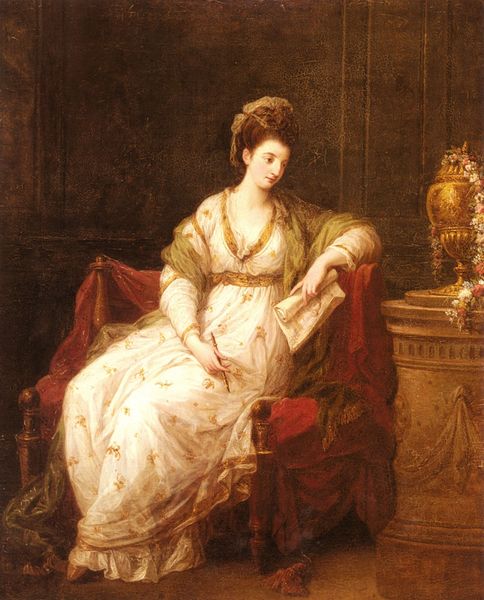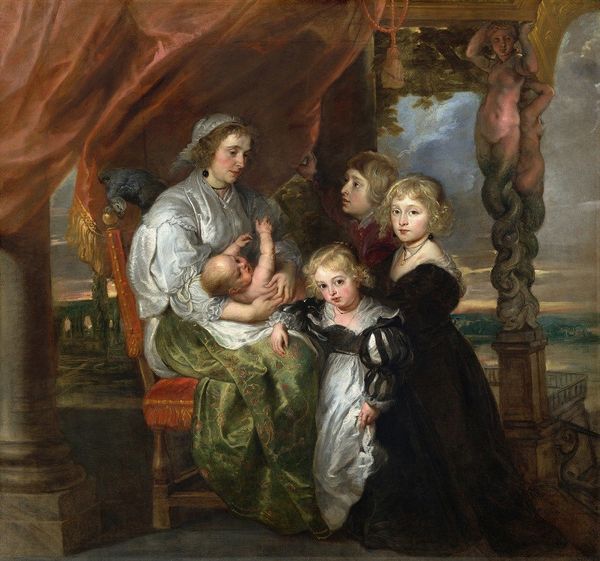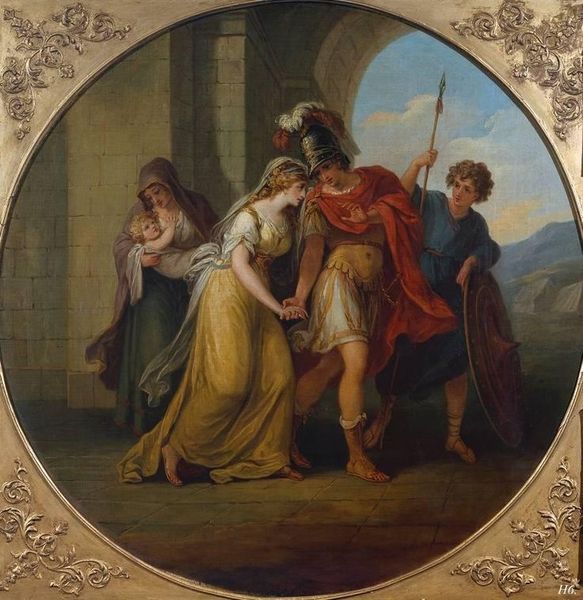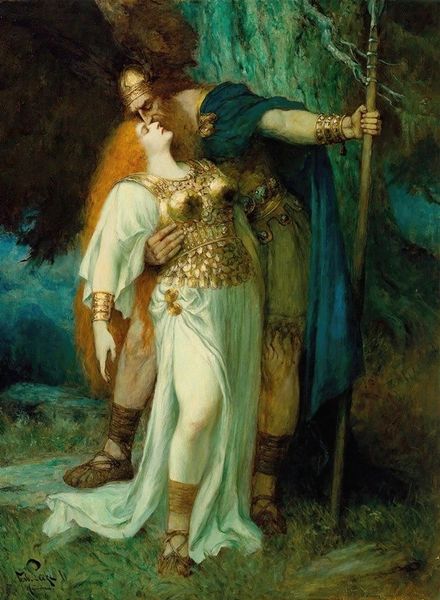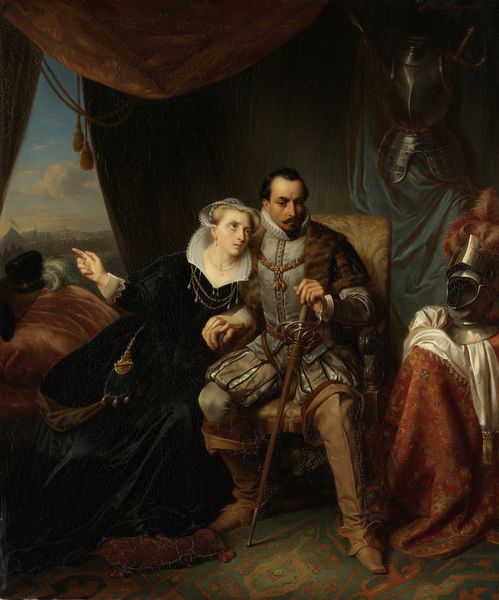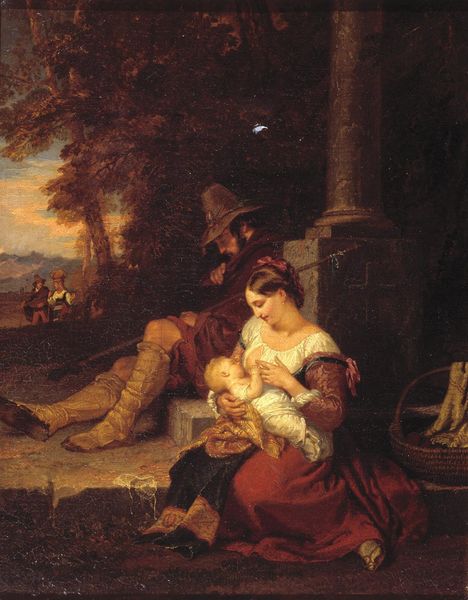
Faust and Marguerite In The Garden
oil-paint
#
portrait
#
figurative
#
character portrait
#
oil-paint
#
figuration
#
oil painting
#
underpainting
#
romanticism
#
genre-painting
#
history-painting
#
italian-renaissance
Copyright: Public Domain: Artvee
Eugen von Blaas painted this scene from Goethe’s Faust, most likely in the late 19th or early 20th century, with oil paints. Looking closely, you'll notice that the fabric worn by the characters are given as much attention as their facial features. The velvety texture of Faust's jacket is built up with careful, thin layers of paint, a technique called glazing. Meanwhile, Marguerite’s lustrous skirt reflects light, thanks to the artist’s skillful manipulation of the medium. We can see this is an accomplished artist; he's using these features to convey the characters' social status. Consider the labor involved in making these garments at the time; the hours of spinning, weaving, and tailoring. Von Blaas’s careful representation elevates these details, reminding us that even in a scene of romance, material realities matter. The smooth canvas and fine pigments, all products of sophisticated industry, further highlight the distance between the painting and the labor it depicts. The artist's skill is evident, but it’s the echoes of craft and labor embedded in the scene that truly bring it to life.
Comments
No comments
Be the first to comment and join the conversation on the ultimate creative platform.
